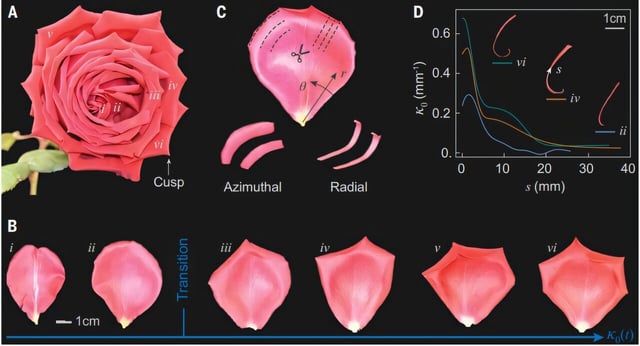Overview
- Researchers have identified Mainardi-Codazzi-Peterson (MCP) incompatibility as the geometric mechanism shaping the sharp cusps of rose petals, challenging traditional Gauss curvature theories.
- The study, published in *Science*, combined theoretical analysis, computational modeling, and synthetic experiments to validate MCP incompatibility as the driving force behind rose petal morphology.
- Synthetic disc experiments replicated rose petal growth patterns, demonstrating how localized stress concentrations create sharp features and influence subsequent tissue growth.
- Roses are the only known natural system to employ MCP incompatibility, highlighting their unique evolutionary adaptation compared to other plants that rely on Gaussian mechanisms.
- The findings open new possibilities for designing advanced shape-morphing materials, leveraging MCP incompatibility for precise, localized deformations in engineering applications.

